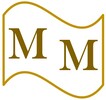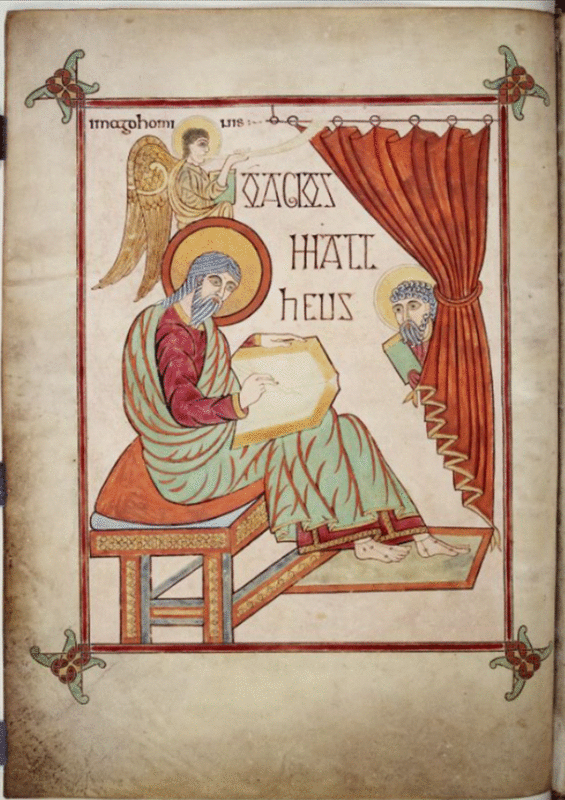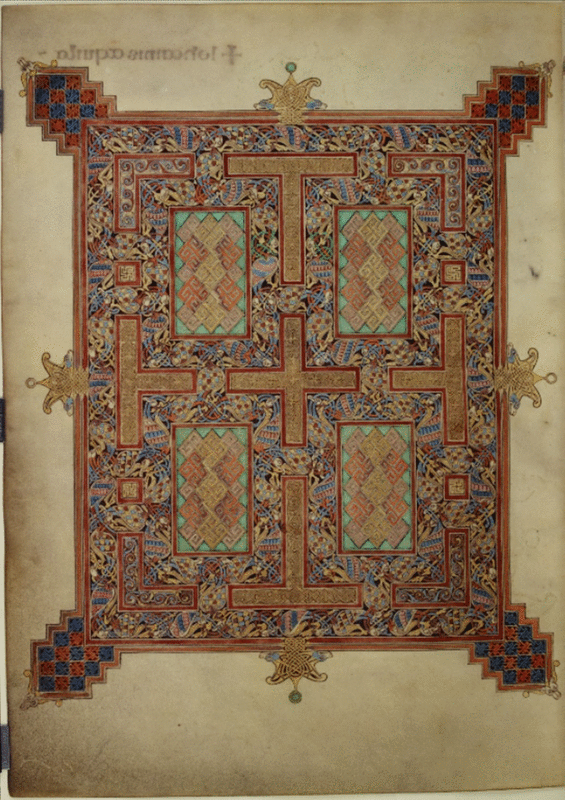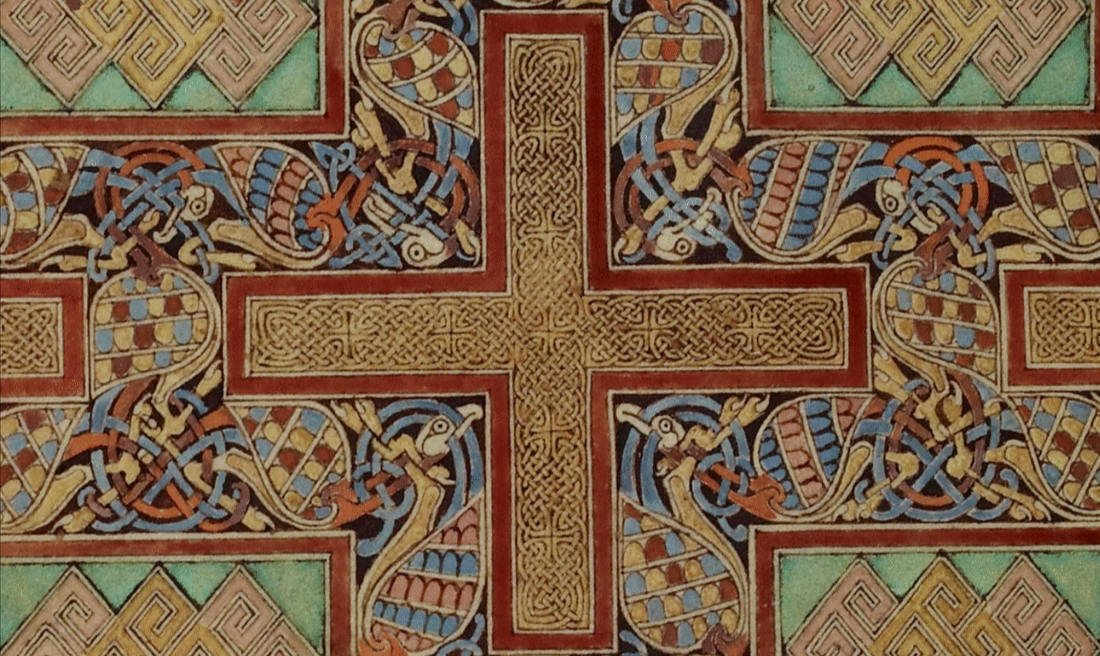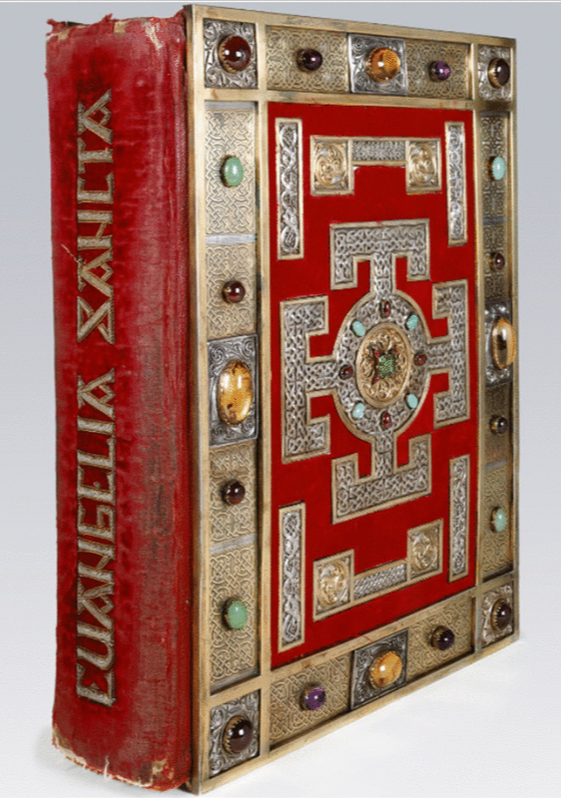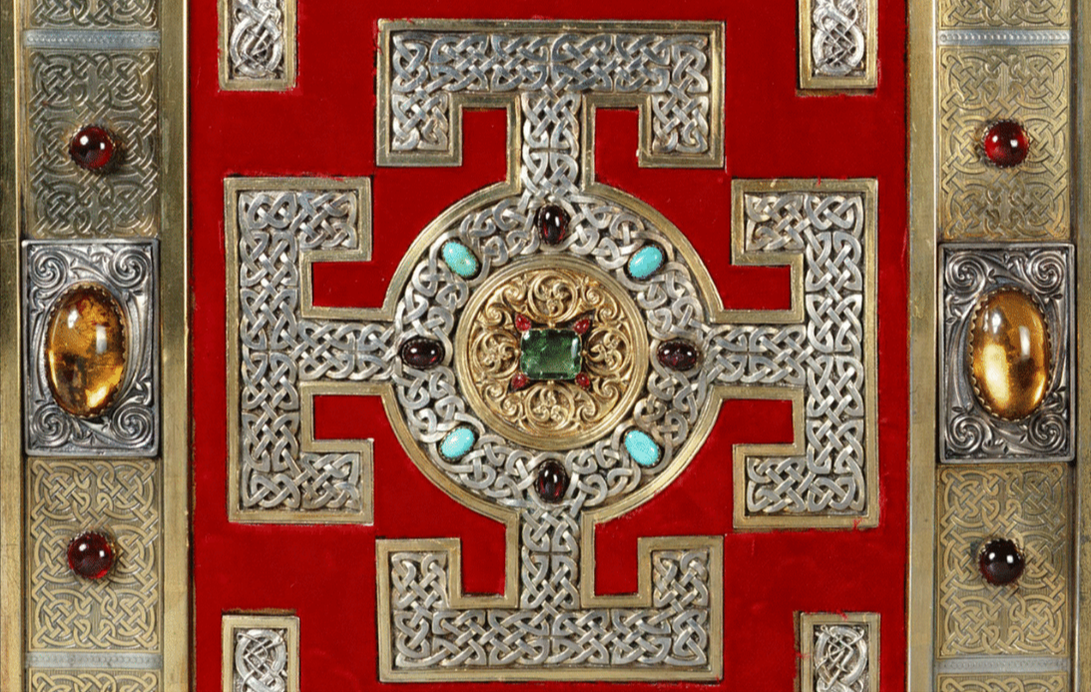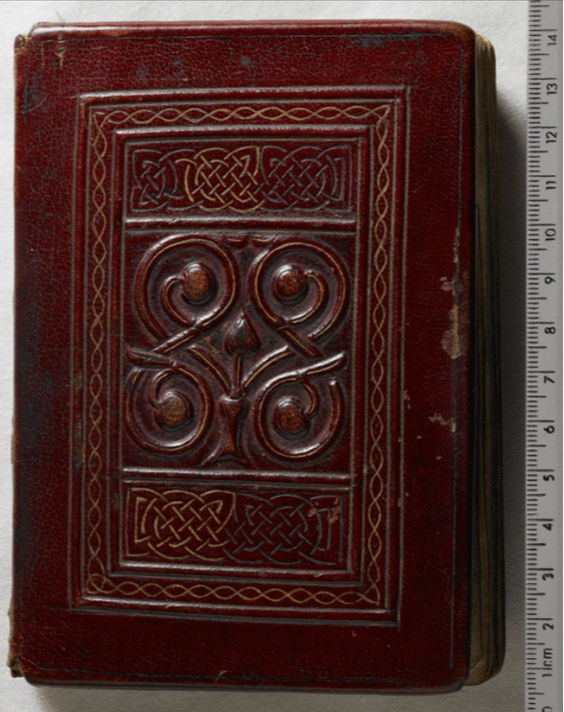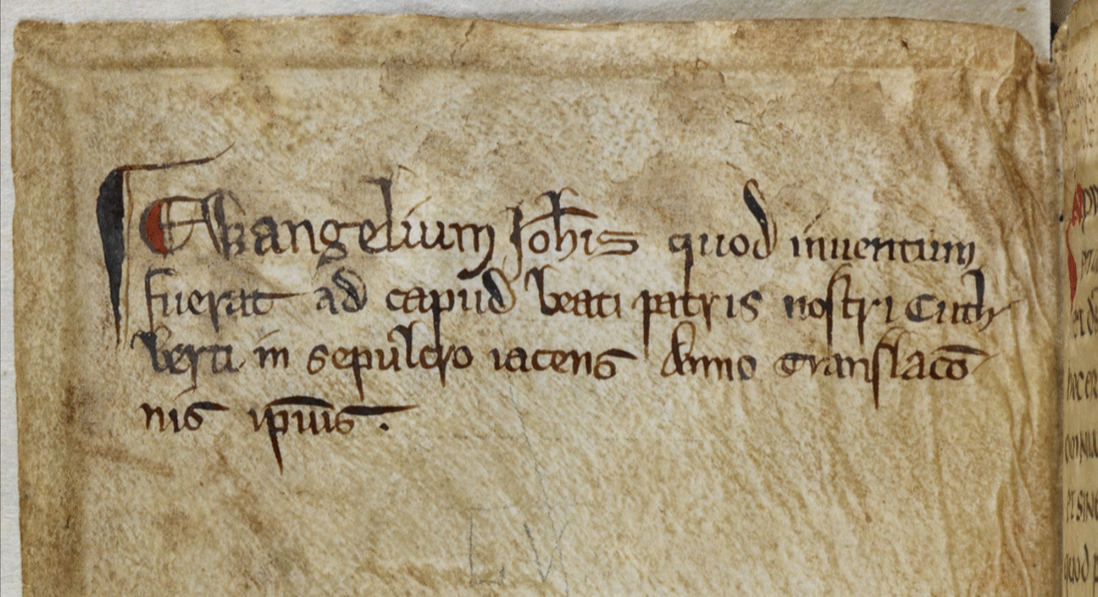Blessed ones, I always try my very best to instil in the hearts and minds of my beloved readers an appreciation for the gospel of Christ, do I not? Well, today I thought I would show you how using the wizardrous British Library digitised collection of Anglo-Saxon manuscripts can amplify that appreciation. So we are going to look at gospel book covers! Now I am quite sure that even the most fleshly of souls in this wicked world have heard of the magnificent Lindisfarne Gospels. A masterpiece of Anglo-Saxon art and design... in your face, seventh-century spirituality. You only have to look at one of its carpet pages to see what I mean. (They're called 'carpet' pages because they resemble carpets from the East.) Now a book like this needs a cover of distinction, does it not? Unfortunately, we have no way of knowing exactly what the original binding looked like, other than that it was leather and made by some fellow called Ethelwald. Later, in the eighth century, Billfrith the Anchorite decorated it with jewels and precious metal. But not even I, in my capacity as time-travelling monk, can assist you any further on this matter. However, what we do have is a Victorian interpretation of an appropriate cover for the Word of our Lord. And I must humbly concede that Messrs Smith, Nicholson and Co. of Lincoln’s Inn, London did manage to get a sense of the cover's history and especially the Celtic influenced artwork so evident in the gospel pages themselves. But really, all those jewels! It's like the loudest possible advertisement to the Vikings to come and plunder. As I've been told, on more than one occasion, I am at heart a rather humble fellow (I hope that wasn't derisive tittering I just heard there) and hence my penchant is for something less gaudy, shall we say, to wrap around my dear Lord's message. And so I must champion the simply elegant and, may I add, original early eighth-century binding of the St Cuthbert Gospel. Measuring just 137 x 95 mm (5.4 x 3.7 inches), it fits in the palm of my hand. Small is beautiful. By contrast, the Lindisfarne Gospels dwarves this tiny treasure, measuring a stately 365 x 275 mm (14.4 x 10.8 inches). But I prefer the simplicity of the St Cuthbert cover, with its restrained Celtic interlacing and stylised cherries rather than gemstones. This gospel book, which contains only the Gospel of St John, was discovered in September of 1104 inside the coffin of Saint Cuthbert (c.635-687) at the time when his remains were translated to Durham. A thirteenth-century note, added on folio ii verso, states that it 'was found at the head of our blessed father Cuthbert lying in his tomb in the year of his translation'. Since scholars have recently dated the script and decoration of the binding to the decades after his first translation to Lindisfarne in 698, then we must assume this means on the translation to Durham. I should probably observe, blessed ones, that our Cuthbert, one of the greatest of all Anglo-Saxon saints, somehow managed to get about quite a bit post mortum. After being re-interred in 698 at Lindisfarne, he was removed from there in 875 by terrified monks fleeing from the nasty Vikings who had captured their monastery, only for him to wander around with the brethren for seven years, before eventually being found a resting place at St Cuthbert's Church in Chester-Le-Street. That didn't last terribly long, however, because those dastardly Danes struck again. Poor old Cuthbert was forced on the move once more, arriving safely at Ripon in 995. Later, Cuthbert himself, we are to understand, had a quiet word in the ears of the monks at Ripon and let them know he wanted to go to Durham. And so in 1104, that's where this blessed little book turned up. Who would have thought there was such a tale to tell inside its cover?
4 Comments
2/4/2017 05:10:56 pm
Wonderful post. I love it. 3 comments:
Reply
The Anglo-Saxon Monk
2/4/2017 06:17:31 pm
My dear sister and lady, thank you most kindly for your words of appreciation. Now to answer your questions:
Reply
2/4/2017 11:02:35 pm
I follow blogs and tweets just hoping to run across perfectly lovely--and illustrated--pieces like this. A secret pleasure for the older, settled me made possible by technology that would astound the younger, traveling scholar me.
Reply
The Anglo-Saxon Monk
3/4/2017 06:32:49 am
Well, I am delighted to hear your kind words, Gabriella. As a time-travelling monk from the eleventh century (which I believe makes me a little older than you and most certainly gives me a perculiar perspective), I fully concur with your admiration for twenty-first-century wizardology. Please continue to enjoy the blog posts. I hope also to have my vlogs up and running by next month, which hopefully will add further pleasure to my blessed readers, such as your kind self. May you have many blessings.
Reply
Your comment will be posted after it is approved.
Leave a Reply. |
Details
|
